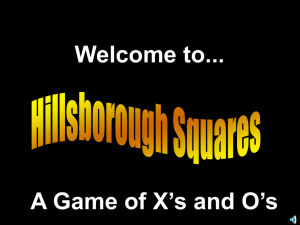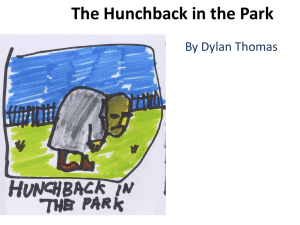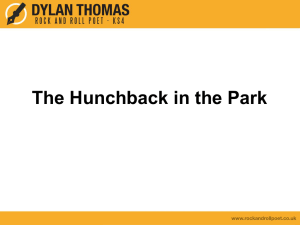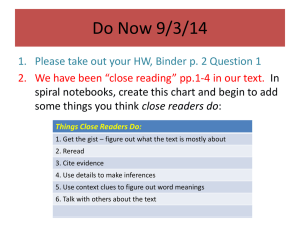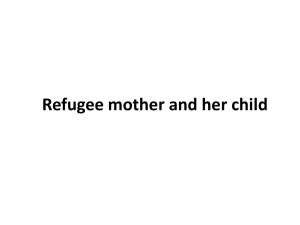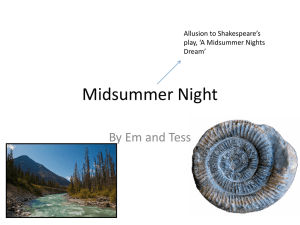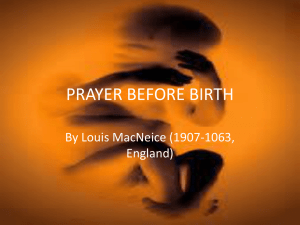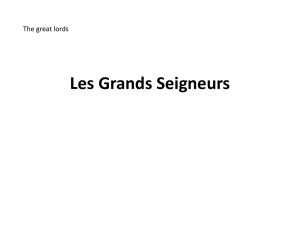The Hunchback in the Park File
advertisement
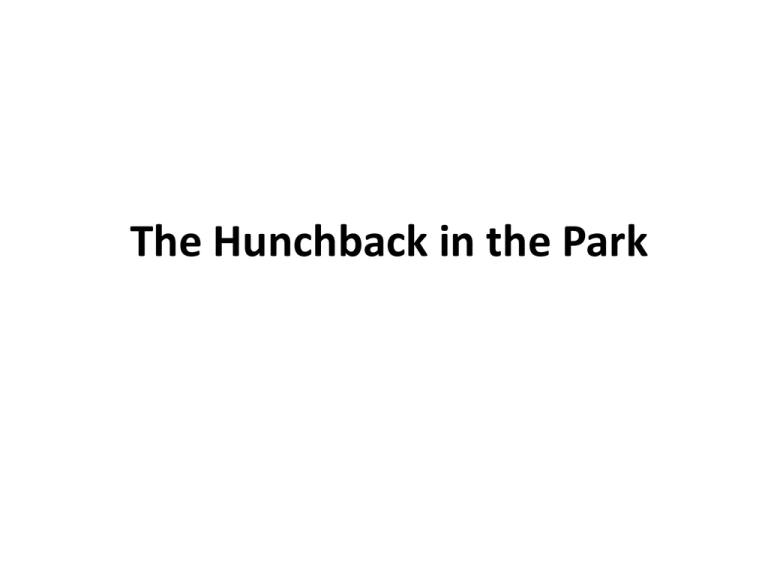
The Hunchback in the Park In this poem… • The poet describes a day in the life of a hunchback in a park where he is teased by truant boys from the town • There is no punctuation other than 3 full stops – so we get a fast and whirling picture of what is happening which creates confusion Stanza One The hunchback in the park A solitary mister Propped between trees and water From the opening of the garden lock That lets the trees and water enter Until the Sunday sombre bell at dark The hunchback seems lonely and is isolated from normal society by his unusual appearance. He spends all day in the park from the moment the gate is unlocked until the bell at night. Stanza Two Eating bread from a newspaper Drinking water from the chained cup That the children filled with gravel In the fountain basin where I sailed my ship Slept at night in a dog kennel But nobody chained him up. the hunchback lives an unorthodox life – he eats bread out of a newspaper and drinks from a cup chained up – but some children have filled it with gravel Stanza Three Using a simile, the poet compares the hunchback to the birds – this may imply he is free like them Like the park birds he came early Like the water he sat down And Mister they called Hey Mister The truant boys from the town Running when he had heard them clearly On out of sound Soon boys skiving from school arrive and shout at him Stanza Four Past lake and rockery Laughing when he shook his paper Hunchbacked in mockery Through the loud zoo of the willow groves Dodging the park keeper With his stick that picked up leaves. The boys taunt him and the metaphor ‘hunchbacked in mockery’ shows how he physically tries to hide from them Stanza Five And the old dog sleeper Alone between nurses and swans While the boys among willows Made the tigers jump out of their eyes To roar on the rockery stones And the groves were blue with sailors The boys have fantasies – they make ‘tigers jump out of their eyes’ – they imagine they are in a zoo and imagine that there are sailors there. Stanza Six Made all day until bell time A woman figure without fault Straight as a young elm Straight and tall from his crooked bones That she might stand in the night After the locks and chains The hunchback imagines a woman in the park Stanza Seven All night in the unmade park After the railings and shrubberies The birds the grass the trees the lake And the wild boys innocent as strawberries Had followed the hunchback To his kennel in the dark. Things to note • The hunchback and the boys are contrasted throughout the poem. They are loud, he is quiet. They are young, he is old. They are filled with movement and life, he is still and static. • The children are full of energy and innocence yet they are cruel to the hunchback The poem’s structure • The stanzas are ordered according to their line length, the number of lines and the rhyme scheme • Half rhyme or rhyme is used consistently – the regularity of this suggests that what happens in the poem is and everyday occurrence. • The speed of the poem suggests the energy of the boys Additionally… • The poem is full of descriptions of nature • The trees, lake and grass are all personified • The park is a very special place – it is full of nature and therefore not part of civilisation – it is a place for imagination • The poem presents outsiders in a sympathetic light – like ‘Clown Punk’
